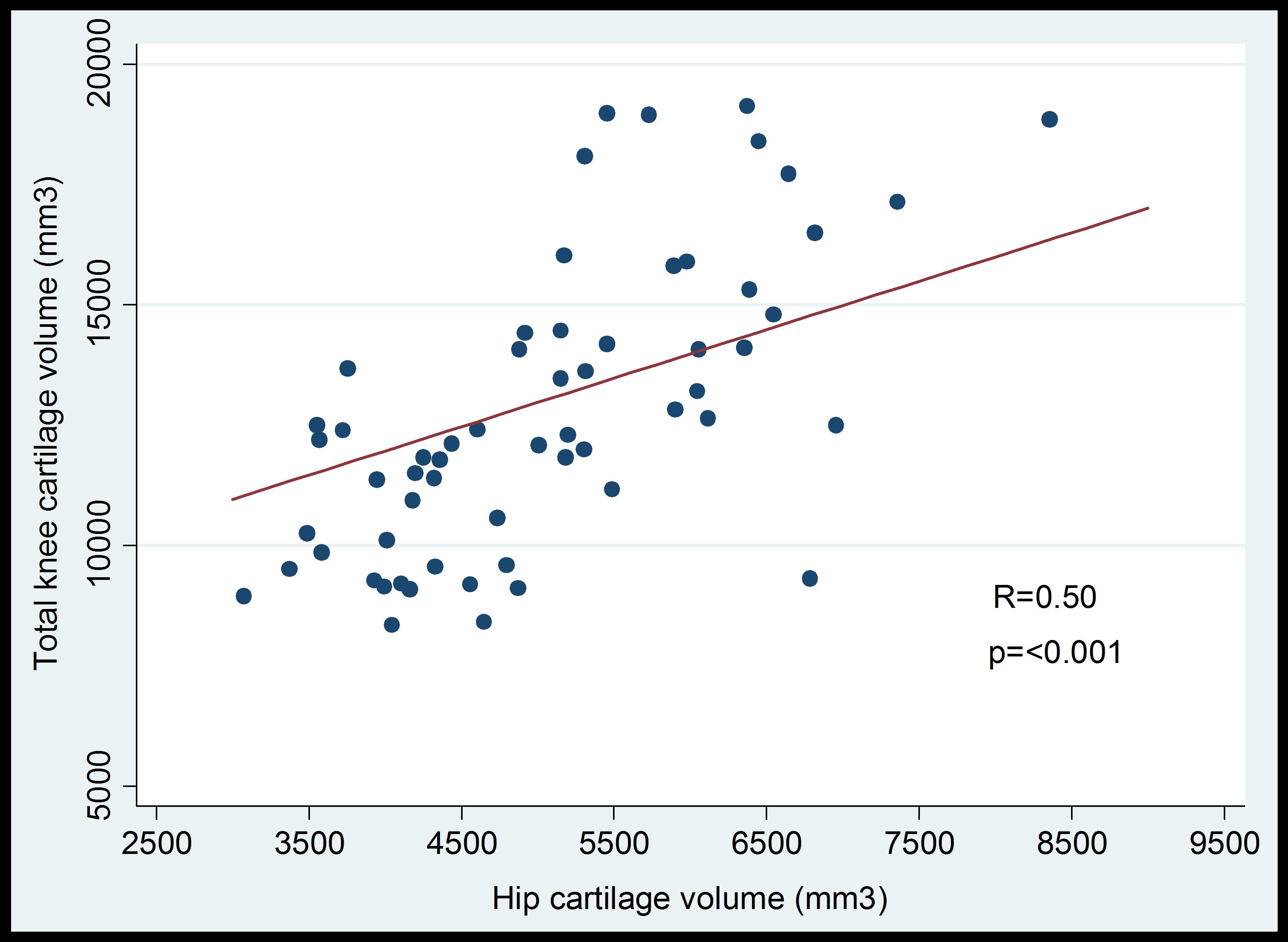Session Information
Session Type: Abstract Submissions (ACR)
Background/Purpose: Cartilage loss is the key pathological feature of osteoarthritis (OA) and can be assessed indirectly using radiography or directly through magnetic resonance imaging (MRI). A number of cross-sectional studies have examined the association of hand OA with hip or knee OA, suggesting that primary generalised OA (PGOA) may be a distinct disease in which systemic predisposition is more important than local (mechanical) factors. However, despite the high frequency of involvement of the hip and the knee joints in OA, only a few studies have looked at the radiographic association of joint space narrowing (JSN) in these two joints with inconsistent results. None has done so using MRI. The aim of this study was to examine the association of hip and knee cartilage measured by both radiography and MRI.
Methods: We studied 151 participants from a cohort study of older adults. MRI was used to assess hip and knee cartilage volume and radiography was used to asses JSN at both sites. Correlation analyses were used to compare cartilage volume measurements and JSN.
Results: In adjusted analysis, there was a consistent, positive association between knee cartilage volume and hip cartilage volume which was best for total knee cartilage volume (R= 0.23-0.50, all P= <0.05). In contrast, there was no or at best a weak correlation between hip and knee JSN (R= -0.01-0.24).
Figure 1: Correlation between hip cartilage volume and total knee cartilage volume. Line of best fit, R-value and p-value were adjusted for age and sex.
Conclusion: Hip and knee cartilage volume are more strongly associated than hip and knee radiographic JSN suggesting commonality of cartilage volume at different anatomic sites. The weaker radiographic association may reflect less measurement error with MRI or the contribution of multiple structures to JSN in the knee.
Disclosure:
H. I. Khan,
None;
D. Dore,
None;
G. Zhai,
None;
C. Ding,
None;
J. P. Pelletier,
ArthroLab Inc.,
4,
Bioibérica S.A.,
5;
J. Martel-Pelletier,
ArthoLab Inc,
2,
Servier, France,
5;
F. Cicuttini,
None;
G. Jones,
None.
« Back to 2012 ACR/ARHP Annual Meeting
ACR Meeting Abstracts - https://acrabstracts.org/abstract/association-between-hip-and-knee-cartilage-measured-using-radiographs-and-magnetic-resonance-imaging-the-tasmanian-older-adult-cohort-study/

